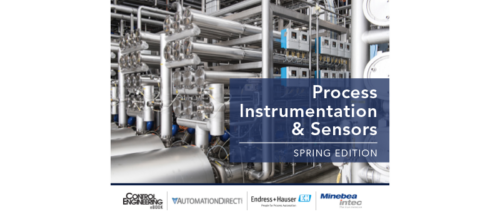Custody transfer: getting what you pay for
When purchasing gasoline for your automobile, do you ever wonder if you are getting what you pay for? Have you ever stopped the pump at exactly 10 gallons to see if the price is correct? Verifying that an agreed-upon price per unit is being delivered is what custody transfer is all about. Whether it's between companies or between departments, ensuring custody transfers are accurate requires cal...
When purchasing gasoline for your automobile, do you ever wonder if you are getting what you pay for? Have you ever stopped the pump at exactly 10 gallons to see if the price is correct?
Verifying that an agreed-upon price per unit is being delivered is what custody transfer is all about. Whether it’s between companies or between departments, ensuring custody transfers are accurate requires calibrated, repeatable instrumentation, such as scales, load cells, and flowmeters.
Verifying accuracy
Scales and load cells are relatively easy to prove using certified weights.
Proving the accuracy and repeatability of process flowmeters is more complex and requires using a method to check an unknown flowmeter against a known and accepted standard. Popular flowmeter proving methods are:
Bell proving —commonly reserved for measurement of gases at low pressure and low flow;
Volumetric proving —using a seraphin can or piston prover to move a measured volume of fluid through the flowmeter and comparing results with the output of the unknown flowmeter;
Gravimetric proving —measuring the weight of a fluid by scale or load cell and applying a known conversion formula; and
Master-meter proving —comparing a volume of fluid (gas or liquid) passing through a previously calibrated “master-flow meter” using one of the above methods with the same volume passing through the unknown flowmeter.
Volumetric and gravimetric proving are referred to as primary-proving methods, while master-flowmeter proving is a secondary-prover method.
Proving field flowmeters
Although flowmeters are calibrated and documented at the factory, numerous events can require a meter be recalibrated:
Normal wear and tear can change a meter’s performance. Orifice plates can become damaged, turbine meter bearings can wear, and dirt and trash can accumulate in the flow stream;
Gas or liquid medium can change density, temperature, pressure, phase, etc., from factory calibration conditions; and/or
The buyer or seller may request verification of transferred volumes.
Historically, flowmeter recalibration required its removal from the line and testing it against a reference standard, often by a third party at an off-site location. Various vendors provide a variety of verification and calibration services.
Non-traditional solutions
Turbine meters and differential-pressure measuring devices have traditionally been the preferred technology for gas applications in general and custody transfer of natural gas in particular. To arrive at the required standard volume units using traditional technologies requires compensating for changes in pressure and temperature, usually in the form of additional instrumentation.
Coriolis meters provide mass flow measurements directly, thus eliminating the need for additional instrumentation. However, Coriolis meters measure in mass units, thus conversion to standard flow units (such as SCFM or NM3/hr) is required. In many gas applications (such as hydrogen, helium, nitrogen, air, oxygen), standard density is a fixed number available from a physical properties database. Variable composition gas applications require calculating the standard density using an equation of state, such as American Gas Association Report No. 8, “Compressibility Factors of Natural Gas and other Related Hydrocarbon Gases.”
Related reading
See “News” in this issue for related reading on patented “in-service” Coriolis flowmeter verification procedure that uses density measurement.
Do you have experience and expertise with the topics mentioned in this content? You should consider contributing to our CFE Media editorial team and getting the recognition you and your company deserve. Click here to start this process.


